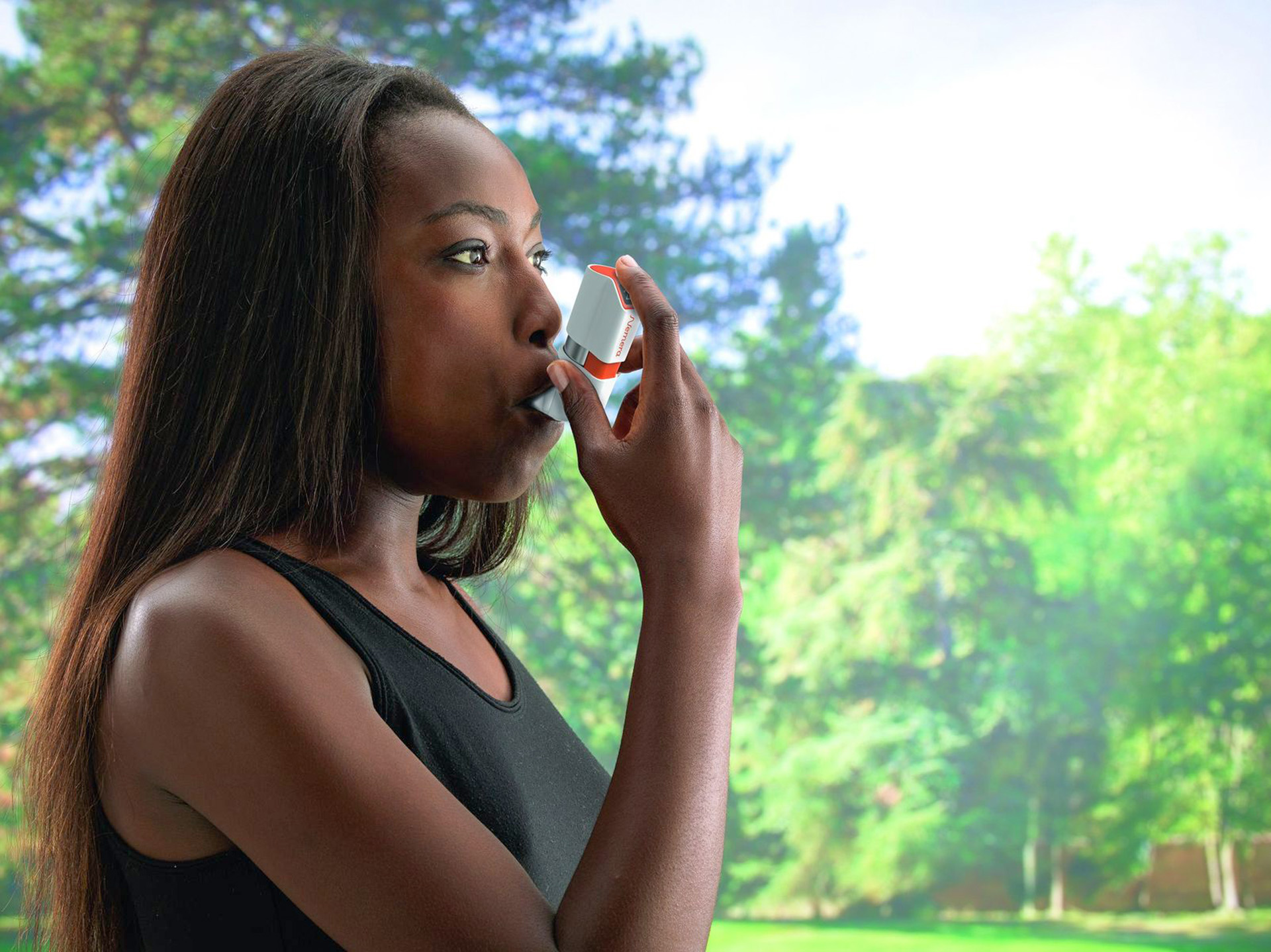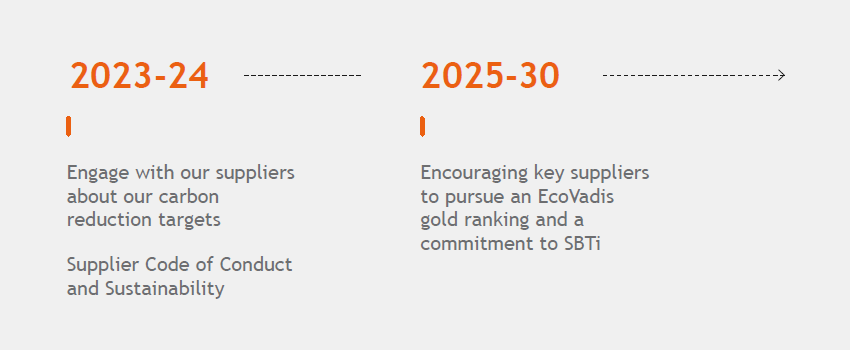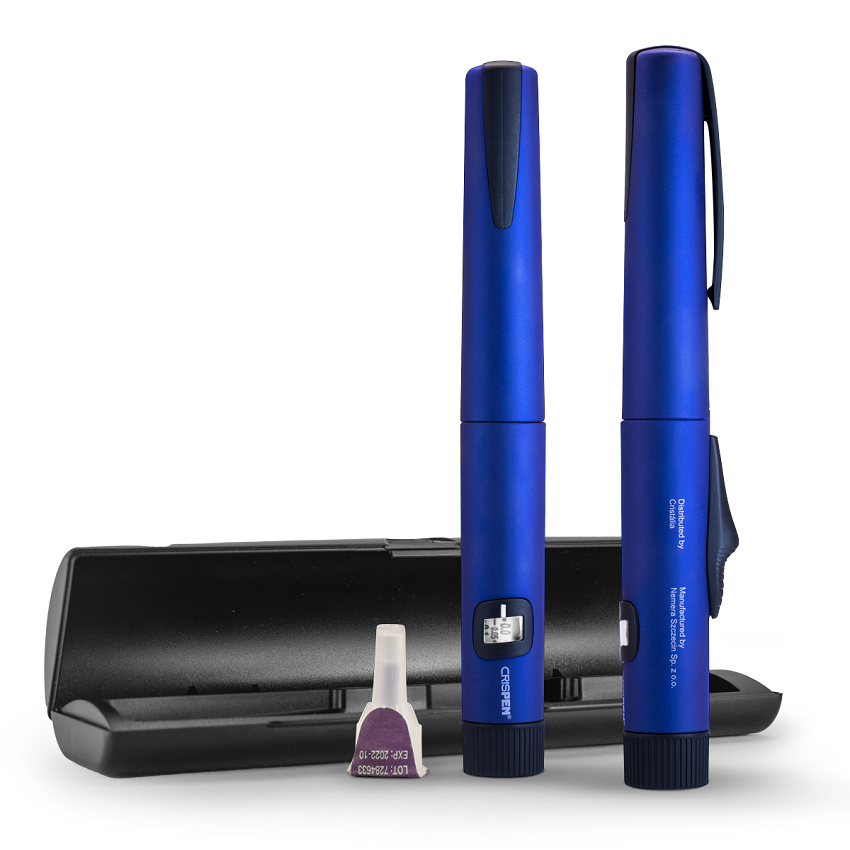Meeting Inhalers’ Sustainability Challenges
27/04/2023

Nemera presents its vision and solutions, including dry powder and soft mist devices, as alternatives to propellant gas emissions from pMDIs
Léa Salfati and Gildas Huet at Nemera
In 2022, close to 850 million people around the world were suffering from a chronic respiratory disease, notably asthma and chronic obstructive pulmonary disease (COPD)[1]. The numbers of people with these pulmonary conditions are expected
to rise, given the increasing elderly population, air pollution, climate change and evolving lifestyles. Although these are long-term conditions with no permanent cure, the symptoms can be controlled with the right treatment. Drug delivery inhalation devices play a crucial role here.
Over the years, several types of inhalation devices have been developed, including pressurised metered-dose inhalers (pMDIs), dry powder inhalers (DPIs) and, more recently, soft mist inhalers (SMIs). In 2021, 1.5 billion inhalers were sold, increasing CAGR by 4%.
Among these, pMDIs are the most common, representing about 60% of the inhalers’ market. However, pMDIs containing hydrofluocarbons (HFCs) have become a big challenge, in terms of sustainability, in recent years.
In 1987, the Montreal Protocol on Substances that Deplete the Ozone Layer regulated the production and consumption of chemicals referred to as ‘ozone-depleting substances’ (ODS). These chemicals damage the
stratospheric ozone layer when released into the atmosphere. The use of HFCs is growing by 8% per year, with annual CO2 emissions projected to increase
by 7-19% by 2050. Finding ways to control these HFCs is one of the biggest challenges today, but solutions are necessary to keep global temperature rise at or below 2°C this century.
In 2016, countries signing up to the Montreal Protocol in Rwanda agreed to phase down the use of HFCs, adding them to the list of controlled substances and introducing a timeline for gradual reduction by 80-85% by 2040.[2],[3]
The Medical and Chemicals Technical Options Committee estimated that 800 million HFC pMDIs are manufactured annually worldwide, using approximately 11,550 tons of hydrofluoroalkanes (HFAs)[4]. Again, the Intergovernmental Panel on Climate Change (IPCC) drew attention to pMDIs for their use of propellant gas, contributing to greenhouse gas emissions.

There is a clear need to find a greener alternative to this atomisation technology that eliminates the use of propellant gas. Dosage forms with lower global warming potential (GWP), reformulations and innovative drug delivery devices must all be considered.
As a leader in inhalation drug delivery device manufacture, it is Nemera’s responsibility to find ways to meet these challenges, and steer the pharma industry on this journey.
Dry Powder Inhalers: A Sustainable Alternative With Limitations
Dry powder inhalers (DPIs) are devices delivering medication to the lungs in the form of a dry powder. They are an alternative to pMDIs. Today they represent about 35% of the total inhalers market, after pMDIs. However, this percentage varies by country.
In Sweden only 13% of inhalers are pMDIs and the rest are mainly DPIs. This demonstrates that it is possible to switch from pMDIs to DPIs. A study calculated the potential CO2 reduction in the UK by moving to the Swedish pattern:
The predicted reduction of 550kt CO2eq annually that [has been] calculated by applying the Swedish distribution of inhalation devices to the population in England thus corresponds to approximately 2.6% of the total carbon footprint for National Health Service (NHS) England.[5]
While this number is very encouraging, DPIs are not suitable for all patients:
- They require powerful inspiration flow (ensuring that the medication reaches the lower parts of the lungs), meaning breath must be held for
5-10 seconds - They are not adapted for young children.
Insufficient patient inhalation might lead to reduced dose delivery and incomplete disaggregation of the powder. The deagglomeration principle is triggered by the patient’s strength during the inhalation phase, hence it is very user dependent, meaning a potential restricted application area. Furthermore, not all drugs suit a stable, powder formulation that enables a good dispersion during inhalation.
However, DPIs are based on a proven and established technology and still present a more favourable environmental profile. They may not be adapted to every patient’s needs, but they are a safe and effective solution. These devices are part of the future of inhalers, even if they have to be complemented by other solutions.
Nemera holds a leading position in the manufacture of DPIs. The company set foot in the inhalation space by manufacturing for the number one player in the inhalation DPI market (IQVIA, 2021). This initial success then snowballed into other collaborations with blockbusters in the pharma industry and generic players that specialise in inhalation.
Soft Mist Inhalers: The Emerging Greener Option
A new type of device is the soft mist inhaler (SMI). This generates a fine, slow-moving aerosol of a liquid formulation. This technology reduces the need for patient coordination and inspiratory effort and allows better drug deposition in the lungs, compared to pMDIs and DPIs. SMIs are also compatible with a wide range of drug formulations, including solutions and suspensions, making them suitable for delivering various medications for different respiratory conditions. Last, but not least, they are propellant-free. SMI devices are particularly suitable for those taking pMDI treatments who cannot switch to DPIs.
SMIs are a great fit from both a treatment efficacy (great reach to the lung) and environmental footprint (as they do not involve any gas) standpoint. In addition, their design enables the administration of a liquid formulation, which is a necessary galenic form for certain molecules.
Currently only the Respimat® SMI from Boehringer Ingelheim is available on the market. As it does not contain propellant, the carbon footprint
is clearly lower than pMDI and equivalent to DPI, with less than 780g CO2eq per device. Furthermore, this can be reduced by half by using the refilled cartridges principle.[6],[7]
Many device manufacturers are currently developing new alternatives for SMIs. This segment will grow significantly in the coming years. The main challenge is to generate droplet sizes of below 5µm to reach the lung, which is no easy task when designing such a device.
Nemera’s Commitment to Sustainability
Nemera’s ambition is to embed itself in discussions around the inhalers of tomorrow, striving to ensure R&D effort focuses on sustainability and environmental factors. The company is also committed to support its pharma partners on their sustainability journeys.
Sustainable procurement is one of the strategic pillars of Nemera’s strategy. It is an integral part of Scope 3 in the measurement of greenhouse gas (GHG) emissions, which represent the main part of indirect emissions. This means that implementing a sustainable purchasing strategy will enable Nemera to reduce its GHG emissions in the long term.[8]
With the help of EcoVadis benchmarks and methodology, Nemera has developed a set of objectives up to 2030. Our action plans will include detailed CSR criteria for requirement specifications, contracts and suppliers, including supplier audit checklists and performance evaluations. Finally, we have created a set of internal and external KPIs to track and measure our progress.
We are ready to work on pilot projects to develop less impactful resins and are looking for customers who would like to join us in this adventure.
At Nemera, we believe that the challenges of sustainable development must be met together. This can only be done by integrating the entire value chain. Thanks to collaboration with our partners, and commitment from all stakeholders, we will succeed in transforming our industry.

- Global Data extracts, Inhalation Market in volumes, 2021
- Stocker T F et al, Eds, Intergovernmental Panel on Climate Change, Climate Change 2013: The Physical Science Basis. Contribution of Working Group I to the Fifth Assessment Report of the Intergovernmental Panel on Climate Change, Cambridge, United Kingdom, Cambridge University Press, 2013 (Google Scholar)
- Visit: www.unep.org/ozonaction/ who-we-are/about-montreal-protocol
- Brunner W, Medical and Chemicals Technical Options Committee: 2018 Assessment Report, 2018
- Visit: https://doi.org/10.1136/ thoraxjnl-2019-213744
- Visit: https://doi.org/10.1007/ s12325-019-01028-y
- Dalby R et al, A review of the development of Respimat Soft Mist Inhaler, International Journal of Pharmaceutics, 283, 1-2, 1-9,
2004 - Nemera’s ESG Report 2021-2022
Find out more about PMPS Inhalation supplement: https://www.calameo.com/read/00611338579d77760fe30?page=1
About Nemera
As a world-leading drug delivery device solutions provider, our purpose of putting patients first enables us to design and manufacture devices that maximize treatment efficacy.
We are a holistic partner and help our customers succeed in the sprint to market of their combination products. From early device strategy to state-of-the-art manufacturing, we’re committed to the highest quality standards.
Agile and open-minded, we work with our customers as colleagues. Together, we go the extra mile to fulfil our mission.


